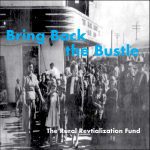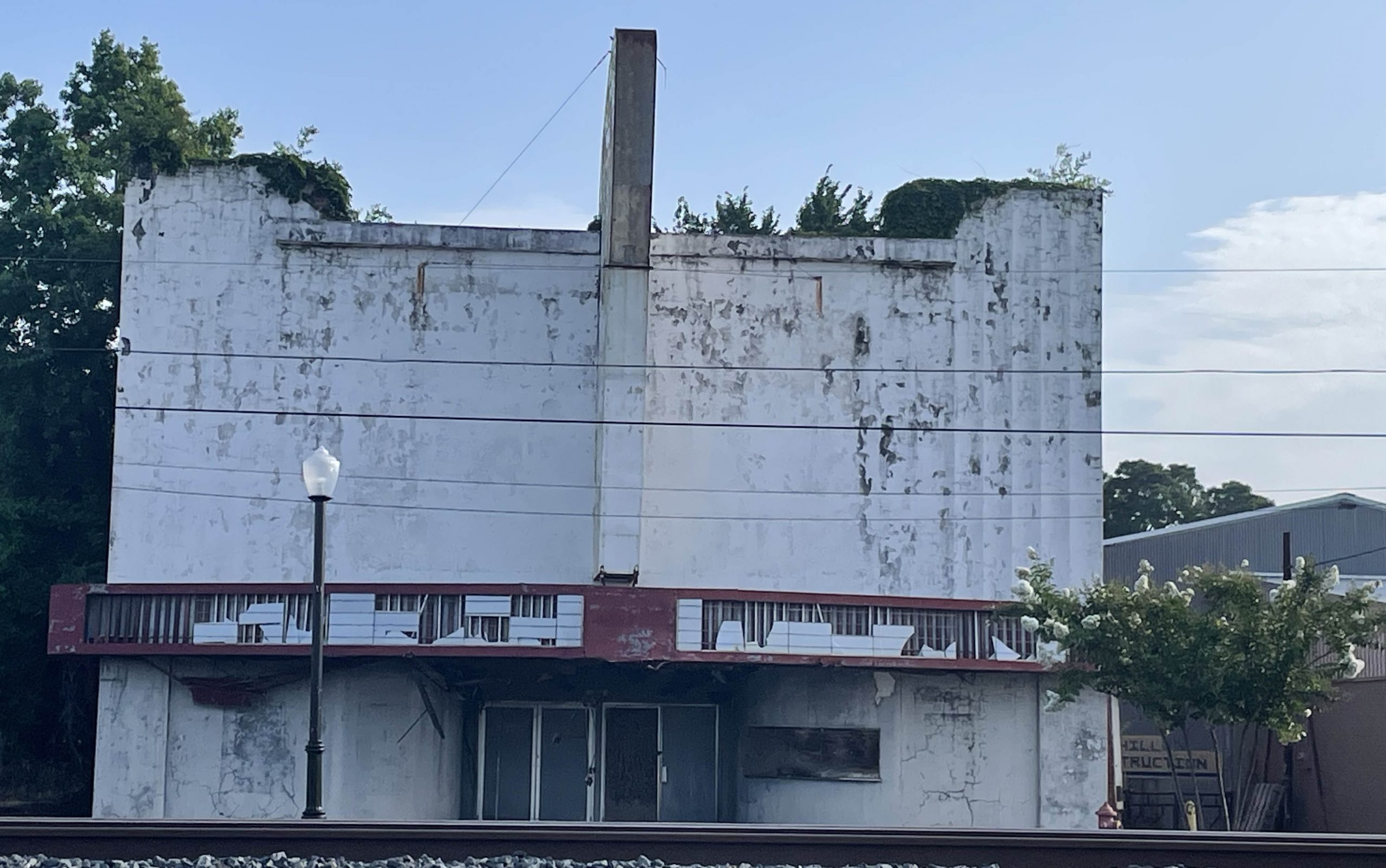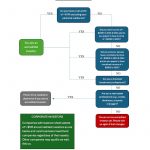
How to Use Historic Tax Credits as a Financing Tool in Rural Downtown Communities
Greetings and welcome to another episode of Bring Back the Bustle, a podcast about revitalizing rural America. I’m Shavon Jones, your host. Today we’re discussing historic tax credits as a financing tool in rural downtown communities.
When you visit rural communities, often, downtown has become a ghost town. Many buildings are vacant. Some are completely run down.
Often, though, these buildings are old. Some of them have architectural significance. Others are significant to a time of growth and commerce in rural America.
Putting those old buildings back in service is a huge step towards Bringing Back the Bustle because we’re not rehabbing just to make downtowns pretty again. We’re investors and property owners. We’re rebuilding because we see demand from potential customers who have money to patronize the businesses we’re bringing to downtown buildings.
Episode Overview
So where is this episode going? This episode will cover HTCs as a standalone financial resource for rehabbing downtown districts. Then, we’ll discuss the amazing benefits of using HTCs in opportunity zones. Remember, in our last episode, we discussed how to get tax-free earnings or appreciation on investments held in OZs. Now, we’re going to talk about how to get free money to build in OZs, in the first place, by using HTCs.
Okay, I realize that this will be the second episode in a row where we discuss how to make money revitalizing rural America. While this is certainly a podcast for investors, it is also a podcast for rural residents. It’s a podcast about rural life and how to support it. So, the next episode, after today, will be about rural culture, how to preserve it and how to assimilate new residents into it like a small melting pot since the United States itself is a big melting pot. That episode is important for investors to listen to as well because these rural residents and the transplants to rural areas are our customers. Without customers you can’t make any money. So, everyone, including rural employers, should tune back in next week for a Rural Life episode.
But today, we’re still talking about money. After all, money is necessary if you want to rebuild something.
As I said earlier, most rural towns have an historic district or downtown area where business was centered. Some of the buildings may be in such disrepair that it is tempting to tear them down. Don’t. Because there is money available for preserving our American history.
Think of when you travel aboard and go to centuries-old towns in Greece or Italy and walk on cobblestoned streets and drive down narrow winding roads that represent how those communities functioned in the old days and how they continue to evolve in modern times. Instead of tearing down everything and making it shiny and new in America, we can preserve our story as well. HTCs are a way to finance the preservation of the American story.
We can reuse these buildings to house businesses that are in demand today. I went to Croatia a couple of years ago. And the hotel I lived in for a week was in the Diocletian [die uh klee shn] Palace built in the third century A.D., 1,800 years ago. It’s still standing. It’s a UNESCO site. Part of it is ruins that can’t be salvaged, and part is hotels, shops, and restaurants. I lived in a remodeled part of it for a week. I had cable TV, internet, a washer/dryer. The apartment was soundproof. The exposed stone walls were stunning. The wall art was ancient artifacts that were inside a locked glass case so guests couldn’t touch them but we could look at them and feel a connection with the past. That location enriched my trip because I felt a warmth and peacefulness that can’t be replicated in cold, minimalist new buildings.
America is only 250 years old. Some of the buildings we’re looking to preserve are over a century old. They reflect our origins, the rapid growth of our economy and the ingenuity of the people who have led our economic development. So let’s talk about Historic Rehabilitation Tax Credits or HTCs.
What Are Historic Tax Credits?
I was going to bring in an historic preservation expert to talk about HTCs, but what I realized is: you’re an investor or a property owner. You don’t need to get into the weeds on HTCs. You just need to understand the concept, how they work, why we like them here at the Rural Fund, and whether they can benefit you as a property owner or an investor. And, I’m the best person to tell you that because I know how to explain things so people know what the heck I’m talking about. So, let’s dig in.
HTCs are investment credits that you can use as a payment source for income taxes owed to the IRS or to some states. You can pay your taxes with money or you can pay them with tax credits. Each tax credit is equal to a dollar. There are different kinds of tax credits. We’re here to talk about historic tax credits or HTCs. To get HTCs, you have to rehab historic properties. You spend money rehabbing historic properties, then the government refunds your money when you pay your taxes.
There are some steps you have to take to get your money back, and there are even steps you can take to get the money advanced to you if you don’t have it to start with. I have to talk about those steps in enough detail for you to decide if this is for you or not. So that’s what’s going to happen for most of the remainder of this session.
How Can Historic Preservation Benefit Local Property Owners?
I want to start by talking about how HTCs can benefit local property owners. I see HTCs as a way to avoid leaving the locals behind. Often, when new money comes into a community, the investors don’t think about the locals. They choose an opportunity zone. They get the benefit of tax-free appreciation. They provide for their own employees and wall themselves off from the rest of the community. That’s a bad result for the locals.
Most of the downtown buildings are owned by local residents not the government. If the owner rehabs the building and attracts a tenant, that creates a small income stream for the owner. A building that wasn’t bringing in any money becomes a source of rental income. That’s better than nothing, but it’s actually small potatoes. Toward the end of this episode, I’ll tell property owners how to get a bigger piece of the pie.
How to Get HTCs?
The HTC application process is a 3 step process and costs about $10K in government fees. First, you have to get the property designated as historic by the National Register of Historic Places. Then, you have to work with preservation experts to preserve the historic elements of the building during your rehab process. Then, you have to prove that you stuck to the approved plan and actually preserved the historic aspects of the building.
Even for a relatively small building, you’re talking more than a year of work. Plus the costs of all the experts and the applications. And shelling out for the contractor yourself.
If you do all of that, you can get a tax credit for much of what you spent. Now, in order to use a tax credit, you must have tax liability. You need that tax liability right away, because HTCs expire a little each year.
If any of this is starting to sound too risky for you, keep listening because I’m not one to raise problems that I don’t have a solution for. I’m going to solve the problem of property owners having to spend cash upfront and vet experts and have tax liability to apply the credits against at the end of the podcast.
But now we know how to get HTCs. We know there is a process in place. It is clear, well-documented. And it’s not a secret.
Even though all of that is the case, I do not recommend HTCs for property owners that are not in rebounding communities. Why? Because your projected rents may not be worth the effort and expense. If you’re in a community with low rents, you won’t make much income by rehabbing your property. In fact, if you have a building that will house 1 or 2 tenants instead of 20 tenants, I don’t think rent is a good play at all—in terms of monetizing your asset, your building. It’s better than nothing, but it’s not real money. It’s not generational wealth. It’s just income to offset some of your current expenses. So, keep listening and we’ll show you how to turn that building into generational wealth.
Stacking HTCs with OZ Benefits
Now, let’s talk to investors for a bit. We’ve been talking to local property owners. Now we’re going to talk to investors. From an investor’s standpoint, the coolest thing about historic preservation is a practice known as “stacking” incentives. You’ll recall that rural OZs already have the tax benefit of tax-free appreciation on the gains earned on rural investments. But there’s more. If we rehab historic properties instead of building new ones, we qualify for tax credits on top of the OZ tax benefits.
Recall, if you will, that the OZ benefits, that we talked about in the last episode, eliminate tax liability on both the money we invest and the appreciation we earn during the holding period.
So, if your tax liability is zero, what more could there be? When you invested your money into the Fund, we used it to acquire properties and rehab them and outfit them for operation of businesses to serve local residents, our customers. If we use historic buildings, we can get that money back that we spent on construction. And when we get the money back, the value of your shares goes up.
Remember, we’re starting operating businesses like epicurean markets and hotels, and health clubs. Those businesses generate tax liability. The HTCs can reduce or eliminate the taxes on business operations. And if we don’t have to pay taxes on annual operations, the value of your shares goes up.
So every tax benefit that we can find and stack on top of the OZ benefits causes the value of your shares to go up. That’s why our fund, the Rural Fund, only invests in opportunity zones.
By stacking the HTCs on top of the OZ benefits, investors can get tax-free income and tax-free appreciation.
Sadly, HTCs only last for 5 years, not the entire 10-year holding period required under the OZ rules. But, I’m certainly not going to complain about being allowed to run a business for 5 years without paying federal or state taxes on the profits. Plus, at the Rural Fund, we use even more incentives than HTCs and OZs. And, we keep stacking tax incentives on top of tax incentives until we get to the point where there’s just nothing left to be paid in taxes.
Maximizing Wealth for Local Property Owners
Now back to how I am going to fix the problem of low rents and tons of work to get HTC benefits for local owners. There’s one other thing I should explain before I fix those problems. And that’s that OZ benefits do not apply to existing owners of property. So if you own a building in an opportunity zone, you cannot get tax-free appreciation for that building. That’s because the OZ law is designed to spur new investment. You’re an old investor. So, property owners can’t stack the HTCs on top of OZs. You have to pay taxes on any appreciation of your asset. So that adds to the problem considerably.
To summarize the problems again:
- You can’t make much money on rents.
- You have to spend the money upfront to rehab your buildings.
- You can’t use the HTCs unless you have tax liability.
- You can’t get the tax-free appreciation for being in an OZ.
But there’s a way you can fix all of that. Exchange your property for shares in the Fund. Then, you’re magically an investor not a property owner. The Fund owns the property. The Fund has to get the HTCs. The Fund has to spend the upfront money. You own shares. Indirectly, you own part of the business that operates from the building. You get tax-free appreciation if you hold the investment long enough.
If you own historic commercial property in a rural OZ, I recommend that you go to our website (www.ruralqrof.com) and read about submitting a project to the Rural Fund. Then set up a call (there’s a link to our calendar on the website) with us to answer your questions.
Conclusion
So, let’s summarize today’s episode. I’m sure we’ll have an opportunity on this podcast to talk about historic preservation in a less investor-centric way than we did today. It’s a topic that deserves to be discussed from an artistic and cultural perspective more than I touched on today. We need to talk about how to blend the new with the old from a sustainability standpoint. So, I expect to revisit the topic of historic preservation with less of a focus on money in a couple of months.
Today’s topic though was how to use historic tax credits as a financing tool in rural downtown communities. The way to use HTCs as a financing tool in rural downtown communities is to stack them with OZ benefits, and other with tax incentives that we will talk about over the weeks ahead, to increase the value of your shares in an OZ Fund to earn even more tax-free appreciation on an historic project than you could earn on a new building.
I’m Shavon Jones. Join me again next Monday to talk about Rural Life. How to get the most out of it and how to integrate and assimilate city slickers and technocrats into rural communities. I’m looking forward to it, and I hope you are, too.



No responses yet